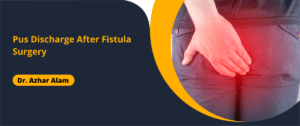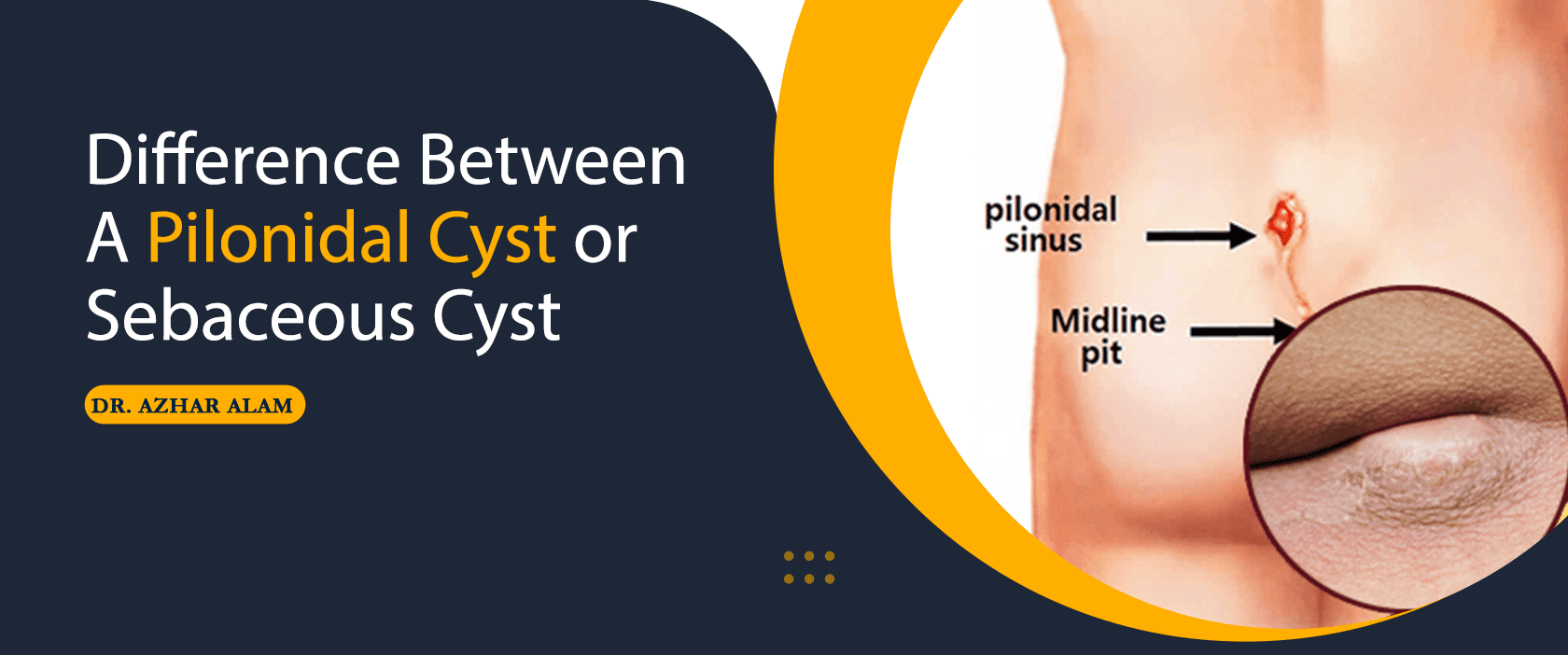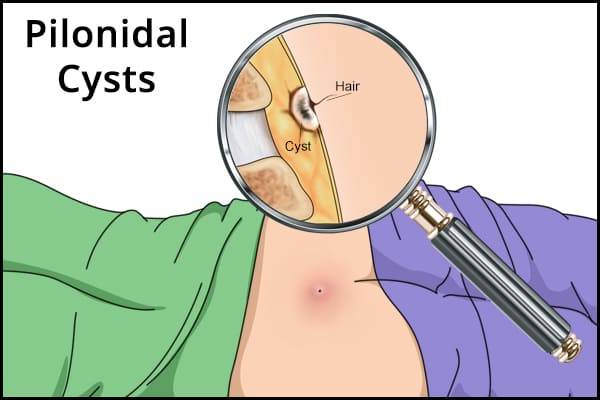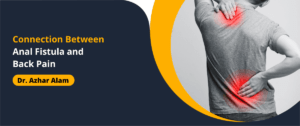

Difference Between A Pilonidal or Sebaceous Cyst
One of the most frequent abnormal skin growths cysts tend to be benign (noncancerous) lumps that form under the skin. Similar to lipomas, a harmless skin bump, cysts do not cause pain develop slowly, and are easily moved when pressure is applied gently. We will discuss the Difference Between A Pilonidal or Sebaceous Cyst in this blog.
In contrast to lipomas cysts are more prone to inflammation and infection. Two kinds of cysts that are more prone to becoming infected, swollen or tender include pilonidal and sebaceous cysts.
Understanding cysts
Cysts are round, slow-growing bumps that form just below the skin. Most cysts appear as yellow or white dome-shaped growths since they’re full of keratin which is the most important skin protein that has an oily similar to cheese.
Epidermoid cysts also known by the name of skin cysts develop when epidermal cells don’t get properly shed. Instead, the cells are able to migrate to deeper skin layers. They expand, and create an enclosed sac in which they release the keratin. As keratin accumulates inside this sac expands into an opaque, yellowish-colored paste which expands the cyst, and occasionally spills out.
The cysts that develop from different kinds of cells, like pilar cysts that result from hair follicles — include other compounds in addition to Keratin. Most cysts are characterized by a tiny, dark “plug” that can release pus when it is pressured. Most cysts are
- Noninvasive to tissues in the vicinity
- Symmetrical circular or dome-shaped
- Skin-colored white, tan, or yellowish
- Pliable and tender (not firm and hard)
- It is small, painless and slow to develop
As the most frequent types of cysts are hair follicles and skin cysts can appear almost anywhere in your body. However, they typically, they appear on your neck, face and torso the most frequently.
Also Read: Pilonidal Sinus- 5 Workouts That Can Help
Pilonidal vs. sebaceous cysts
The majority of cysts are small, innocuous, and discrete and don’t need medical treatment unless they get bigger, get irritated or become infected. Certain cysts disappear completely on their own with time.
Two types of cysts that typically require treatment, but they are sebaceous and pilonidal cysts
Pilonidal cysts

A pilonidal syringe is an oval sac of tissue that typically appears at the top of the cleft of the buttocks however, it can also develop anyplace within the buttock line, starting from the tailbone and ending at the anus. It could be filled with air or fluid and is usually caused by an infection of the skin that is caused by the ingrown hair.
The pilonidal cysts could be a single (acute) issue or chronic issue that recurs in time. They can be chronic or acute but every pilonidal cyst treatment.
Although they’re usually not painful at first Pilonidal cysts can become bigger and more painful if they don’t receive treatment. They may also cause the formation of skin abscesses (swollen pockets of inflammation) or sinus cavities (empty spaces beneath your skin).
Sebaceous cysts
The type of cyst that can be mistaken with a simple skin cyst. While epidermoid cysts can be quite common and result from damaged skin cells sebaceous cysts are rare and are caused by the sebaceous glands that secrete oil to help to lubricate your hair and skin.
Sebaceous cysts may form anyplace on the body outside of the palms of your hands as well as those on your soles. They’re filled with a mix of lipids, known as sebum that is created from the gland responsible for sebaceous. As with the keratin that is found that causes skin cysts causes the sebaceous cysts look like yellow or white dome-shaped bumps.
Sebaceous cysts tend to be painless and non-injurious, however they can grow bigger or break up, or get infected and inflamed. It is possible to monitor this kind and cyst to detect signs of inflammation and check to see whether it disappears by itself or if it is possible to have it treated. Sebaceous cysts that aren’t treated and aren’t able to be resolved on their own will be around for the rest of your life.
treatment of problematic cysts
Although pilonidal cysts aren’t the only type of cyst that requires Pilonidal Sinus Treatment, any cyst that is prominent and painful, irritating or infected is a good candidate for removal surgically. This includes cysts that:
- The size of the company is increasing quickly
- More likely to tear and then become infected
- The condition is easily aggrieved by activities or clothing
- Unappealing, noticeable, or difficult to conceal
- A snareful area (between fingers)
A cyst that’s infectedred, sore swelling, swollen or emitting an unpleasant-smelling discharge needs prompt medical attention. When the infection is gone and the cyst is removed surgically, it’s the most effective method to eliminate the problem and avoid any recurrence.
Contact us at +91 90077 09736 for more information about the evaluation of cysts and removal services offered from the best Pilonidal Sinus Doctor in Kolkata or book a an appointment to see Dr. Azhar Alam today.
About Docor

Dr. Azhar Alam
MBBS (Honours), MRCS A (UK),
DNB General Surgery
FIAGES (Gastro Intestinal Surgery)
FMAS (Minimal Access Surgery),
MNAMS (New Delhi)
Consultant Gastrointestinal, Advanced Laparoscopic and Laser Surgeon
Assistant Professor of Surgery, KPC Medical College and Hospital




